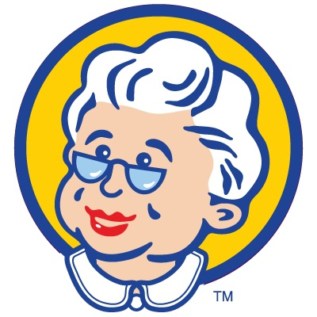
Researchers from France have shown that hepatobiliary MR contrast agent uptake can predict survival in patients with resectable hepatocellular carcinoma (HCC) as well as 18F-FDG PET/CT can. They published their findings in European Radiology.
Sébastien Mulé, a radiologist from Henri Mondor University Hospital in Créteil, south-east of Paris, and colleagues found that in 32 patients with 35 surgically proven HCCs, the quantitative analysis of the hepatobiliary phase (HBP) tumour enhancement in gadobenate dimeglumine (Gd-BOPTA)-enhanced MRI (lesion-to-liver contrast enhancement ratio, LLCER) accurately identifies moderately to poorly differentiated and/or microvascular invasion (MVI)-positive HCCs.
Compared with dual-tracer 18F-FDG and 18F-fluorocholine PET/CT, the contrast-enhanced MRI method performed well for the prediction of tumour aggressiveness and recurrence-free survival (RFS). Gd-BOPTA-enhanced MRI with delayed HBP images deserves consideration as part of pre-surgery workup in patients with resectable HCC, the authors noted.

“The findings confirm our impressions in clinical routine. Indeed, we noted that HCC without significant enhancement at the hepatobiliary phase had higher histological grades than the other ones. Therefore, we were not surprised that the HBP tumour enhancement may also help predict recurrence-free survival,” Mulé told AuntMinnieEurope.com in an email.
However, he added that the strength of that predictive ability surprised the team in part, particularly because 18F-FDG PET/CT is of such well-established prognostic value in patients with HCC.
“PET/CT using 18F-FDG allows the identification of poorly differentiated HCCs at the expense of a relatively lower sensitivity for the detection of well-differentiated HCCs. 18F-FDG has also been shown to negatively correlate with tumour differentiation,” the authors wrote, emphasizing that 18F-FDG positivity may help predict both MVI and early recurrence after surgical resection, while PET/CT with radiolabelled choline – i.e., 11C-acetate or 18F-fluorocholine (18F-FCH) – is of great interest to detect well-differentiated HCCs.
Study details
All patients with untreated HCC who underwent 18F-FDG PET/CT as part of workup before liver resection or orthotopic liver transplantation at Henri Mondor University Hospital between October 2013 and January 2018 were considered eligible for the study (n = 71), and patients were included if they also underwent preoperative liver MRI with HBP imaging. A total of 36 people met the inclusion criteria.
All patients underwent Gd-BOPTA-enhanced MRI including delayed HBP images, 18F-FDG PET/CT, and (for 29/32 patients) 18F-FCH PET/CT during the two months prior to surgery. For each lesion, the authors calculated the LLCER on MRI HBP images and the SUVmax tumour-to-liver ratio (SUVT/L) for both tracers. They analysed and compared the predictive value for aggressive pathological features, including the histological grade and MVI, as well as the RFS.
The areas under receiver operating characteristics for the identification of aggressive HCCs on pathology with LLCER, 18F-FDG SUVT/L and 18F-FCH SUVT/L were 0.92 (95% confidence interval [CI] 0.78, 0.98), 0.89 (95% CI 0.74, 0.97; p = 0.70), and 0.64 (95% CI 0.45, 0.80; p = 0.035).
LLCER was identified as an independent predictor of RFS (HR [95% CI] = 0.91 [0.84, 0.99], p = 0.022). LLCER of -4.72% or less also accurately predicted moderate to poor differentiation grade (sensitivity = 100%, specificity = 92.9%) and MVI (sensitivity = 93.3%, specificity = 60%) and identified patients with poor RFS after surgical resection (p = 0.030).
After surgical resection for HCC, patients with an LLCER of -4.72% or less had significantly poorer recurrence-free survival than patients with an LLCER superior to -4.72%, according to the authors.
“HBP tumour enhancement after Gd-BOPTA injection may help identify aggressive HCC pathological features, and patients with reduced recurrence-free survival after surgical resection,” they wrote.
Impact of research
Based on the study findings, senior author and radiologist Alain Luciani and the rest of the team have changed their routine practice by integrating Gd-BOPTA-enhanced MRI with delayed HBP images as part of pre-surgery workup in all patients with resectable HCC.

“PET/MRI with 18F-FDG is now performed in our institution as part of HCC pre-treatment workup,” Mulé noted. “Improving lesion characterization and prognostic prediction by systematically performing acquisitions at the hepatobiliary phase may be an interesting next step. Further studies will evaluate whether hepatobiliary MR contrast agent uptake may help optimize therapeutic management strategy in patients with HCC.”
Staff at the Henri Mondor University Hospital have been and still are involved in the care of COVID-19 patients, and the pandemic has had a significant impact on the organization and the clinical activity of the radiology department, he said.
“Notably, the management of patients with HCC was significantly altered, as patients were more likely to wait before they consult, and thus to present with more advanced stages of disease,” Mulé added.
- This article was originally published on AuntMinnieEurope.com ©2020 by AuntMinnieEurope.com. Any copying, republication or redistribution of AuntMinnieEurope.com content is expressly prohibited without the prior written consent of AuntMinnieEurope.com.



